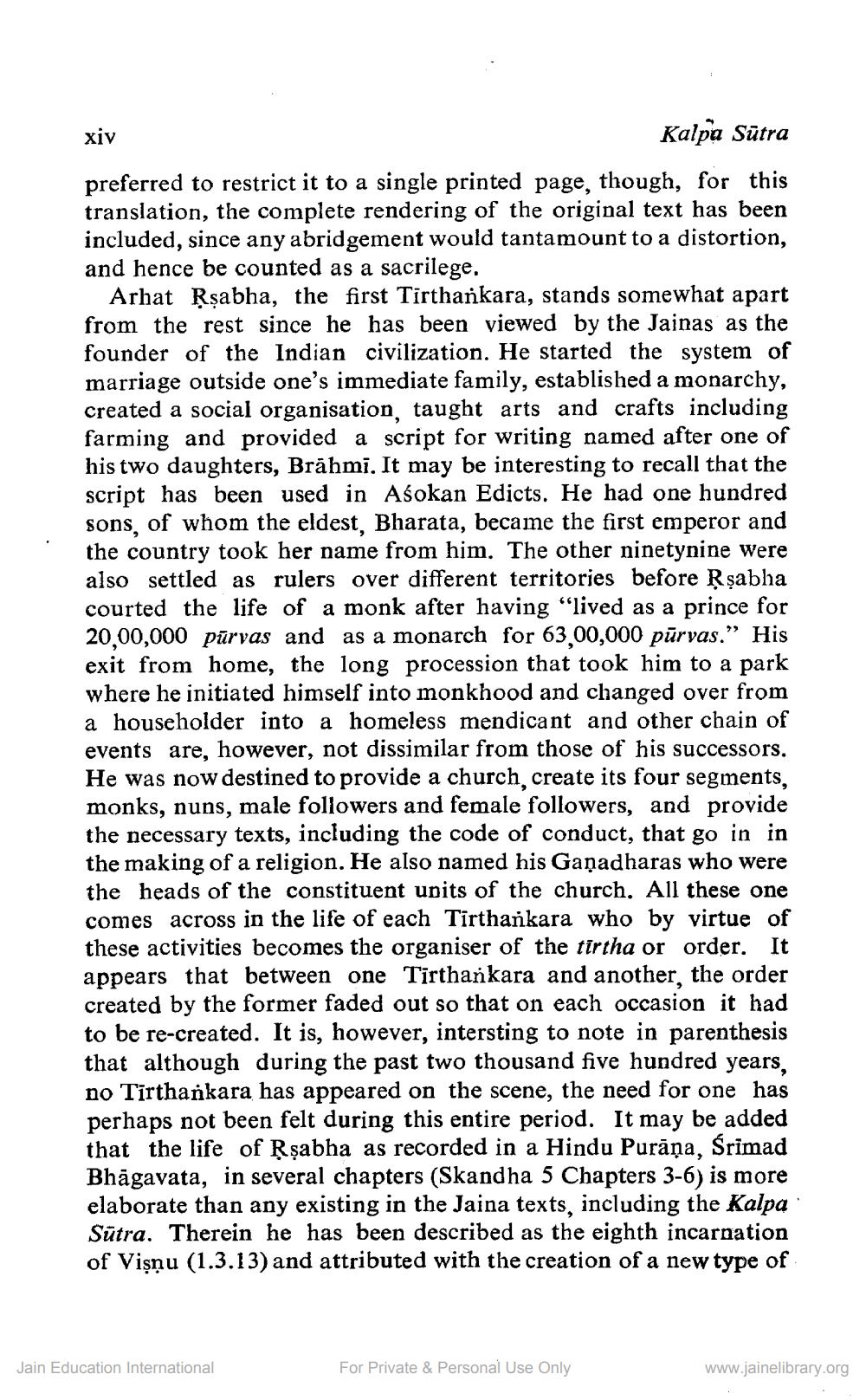________________
Kalpa Sutra
preferred to restrict it to a single printed page, though, for this translation, the complete rendering of the original text has been included, since any abridgement would tantamount to a distortion, and hence be counted as a sacrilege.
Arhat Rṣabha, the first Tirthankara, stands somewhat apart from the rest since he has been viewed by the Jainas as the founder of the Indian civilization. He started the system of marriage outside one's immediate family, established a monarchy, created a social organisation, taught arts and crafts including farming and provided a script for writing named after one of his two daughters, Brahmi. It may be interesting to recall that the script has been used in Aśokan Edicts. He had one hundred sons, of whom the eldest, Bharata, became the first emperor and the country took her name from him. The other ninetynine were also settled as rulers over different territories before Rṣabha courted the life of a monk after having "lived as a prince for 20,00,000 pūrvas and as a monarch for 63,00,000 pūrvas." His exit from home, the long procession that took him to a park where he initiated himself into monkhood and changed over from a householder into a homeless mendicant and other chain of events are, however, not dissimilar from those of his successors. He was now destined to provide a church, create its four segments, monks, nuns, male followers and female followers, and provide the necessary texts, including the code of conduct, that go in in the making of a religion. He also named his Gaṇadharas who were the heads of the constituent units of the church. All these one comes across in the life of each Tirthankara who by virtue of these activities becomes the organiser of the tirtha or order. It appears that between one Tirthankara and another, the order created by the former faded out so that on each occasion it had to be re-created. It is, however, intersting to note in parenthesis that although during the past two thousand five hundred years, no Tirthankara has appeared on the scene, the need for one has perhaps not been felt during this entire period. It may be added that the life of Rṣabha as recorded in a Hindu Purāņa, Śrīmad Bhāgavata, in several chapters (Skandha 5 Chapters 3-6) is more elaborate than any existing in the Jaina texts, including the Kalpa Sūtra. Therein he has been described as the eighth incarnation of Visnu (1.3.13) and attributed with the creation of a new type of
xiv
Jain Education International
For Private & Personal Use Only
www.jainelibrary.org




